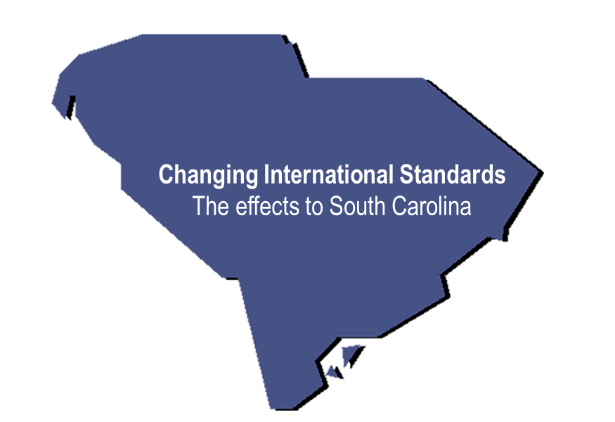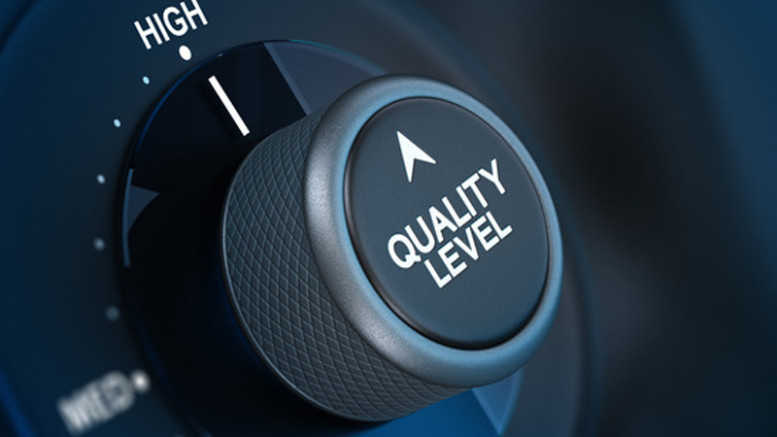 Being a bunch of what some would consider “Quality Dorks”, we’ve been abuzz since the Spring of 2013 with anticipation of the changes to the most widely adopted international management system standard in the world – ISO 9001. If you’ve done business in manufacturing over the past 28 years, you’ve probably had some sort of run-in with ISO standards. Globally, over 1 million organizations hold a certificate of registration to ISO 9001. Millions more (i.e. Boeing, Caterpillar, etc.) subscribe to the requirements that this quality management standard offers to its practitioners.
Being a bunch of what some would consider “Quality Dorks”, we’ve been abuzz since the Spring of 2013 with anticipation of the changes to the most widely adopted international management system standard in the world – ISO 9001. If you’ve done business in manufacturing over the past 28 years, you’ve probably had some sort of run-in with ISO standards. Globally, over 1 million organizations hold a certificate of registration to ISO 9001. Millions more (i.e. Boeing, Caterpillar, etc.) subscribe to the requirements that this quality management standard offers to its practitioners.
According to The Independent Association of Accredited Registrars, there are at least 124 active certificates of registration issued to organizations in South Carolina. There are likely dozens of additional registered organizations who manufacture products, and serve manufacturing industries, within the state of South Carolina with a certificate address held in another state (i.e. corporate office, headquarters, etc.).
September 2015 marked the official release of the 5th edition of the standard, starting the clock the 3-year countdown for organizations transition to the 2015 edition. With only 3 years to transition and a million+ organizations making this transition, there is no doubt that 2018 will look a bit like east-bound I-26 and the Ashley Phosphate exit during any given workday commute. (For those of you outside of the Charleston area, it’s always a very messy bottleneck. Avoid it if you can.)
From our office in downtown Charleston, Concentric serves some of South Carolina’s (and the world’s) most successful and quality-conscious companies. As an organizational improvement consulting firm, our business is heavily impacted by changes to global standards and ever-changing sector requirements. Significant changes to requirements present challenges to how systems are managed and how organizations must manage their supply chains. How significant are the recent changes to ISO 9001, and how can you ensure that your organization is prepared?
Since late 2013, our subject matter experts have hosted dozens of talks, industry forums, public training events and online webinars in order to serve local and global subscribers to various ISO standards. Through the hosting of these events, we’ve had the opportunity to accumulate a handful of questions that are asked repeatedly by attendees. Below are the top 3 Q&A’s from these sessions – including tips, tricks and resources made right here in South Carolina.
Question 1: What is the time frame for adopting the new version of ISO 9001 and when should we get started?
Answer: There will be a three-year transition period for organizations to have a transition audit in order to move from 2008 to 2015. The standard approval process is complete and was released on September 23rd 2015, therefore the specific deadline to transition is September 23rd, 2018. However, we recommend that you review this transition timeline with your registrar and your customers immediately because some of them may require a shorter timeframe to adopt the new standard. We saw this from several OEMs in the early 2000’s when ISO/TS 16949:2002 was introduced replacing QS9000. DaimlerChrysler (at the time) cut a 3-year transition period in half to only 18 months for their Tier 1 suppliers. A surprise like that can add insult to injury.
Question 2: How much time should we allow for transitioning to the new version?
Answer: If your company works like most, it will be a battle to start sooner rather than later. Why do today what you can put off tomorrow, right? Especially when we’re talking about the implementation of international standards. It’s ok. We get it. Management system implementation is about as fun as taking time out of your busy life to do taxes, write up a will, or apply for life insurance. A concentrated transition effort should take you no longer than 6-12 months. If your 6-12 months begins in 2018… well… good luck (remember I-26 and Ashley Phosphate). Trust us. Don’t wait until 2018 to get started.
Question 3: What are the most significant changes to the new standard?
Answer: The most noticeable change to the 2015 version of the ISO 9001 standard is the new 10-clause structure. ISO 9001:2015 is now aligned in its overall structure with other international management system standards such as environmental, energy, safety (ISO 45001 to be released in late 2016), making it easier for companies to manage multiple management systems. Another significant change is the introduction of what is called “risk-based thinking”.
The future is extremely bright for manufacturing in South Carolina, especially in the Lowcountry. With regional manufacturing growth – led by the automotive and aerospace sectors – also comes the opportunity to grow in the right way. Does a management system ensure world-class quality? Absolutely not. However, international management system standards provide the fundamental framework needed to ensure international companies like Volvo, Mercedes-Benz, Boeing and their associated supply chains grow in an effective and efficient way.
For a list of valuable resources “Made in South Carolina”, as well as dozens of free online resources provided by Concentric, visit http://www.acommoncenter.com/iso90012015 or search “Made in South Carolina” on our website.
 About the Author: Jim Thompson is the Founder & President of Concentric Global with headquarters in Charleston, SC. Jim has been a member of the American Society for Quality (ASQ) since 1995 where he has served in various leadership positions including Chair and Lowcountry Quality Conference Chair as well as on the leadership panels for the Quality Management and Lean Enterprise Divisions for ASQ Global. Jim is a 1996 graduate of Purdue University in West Lafayette, IN with a Bachelors in I.O. Psychology and Organizational Leadership & Supervision. He is an Exemplar Global (RABQSA) Accredited Quality Lead Auditor and certified management system instructor and consultant specializing in quality and advanced manufacturing. Jim is a 2015 graduate of the Harbor Entrepreneur Center’s Cohort III and the World Trade Center’s Export Program. He lives and works in downtown Charleston with daughters Mady and Katelyn.
About the Author: Jim Thompson is the Founder & President of Concentric Global with headquarters in Charleston, SC. Jim has been a member of the American Society for Quality (ASQ) since 1995 where he has served in various leadership positions including Chair and Lowcountry Quality Conference Chair as well as on the leadership panels for the Quality Management and Lean Enterprise Divisions for ASQ Global. Jim is a 1996 graduate of Purdue University in West Lafayette, IN with a Bachelors in I.O. Psychology and Organizational Leadership & Supervision. He is an Exemplar Global (RABQSA) Accredited Quality Lead Auditor and certified management system instructor and consultant specializing in quality and advanced manufacturing. Jim is a 2015 graduate of the Harbor Entrepreneur Center’s Cohort III and the World Trade Center’s Export Program. He lives and works in downtown Charleston with daughters Mady and Katelyn.



Be the first to comment on "Tips SC Manufacturers Should Know About Changing Standards In ISO 9001"